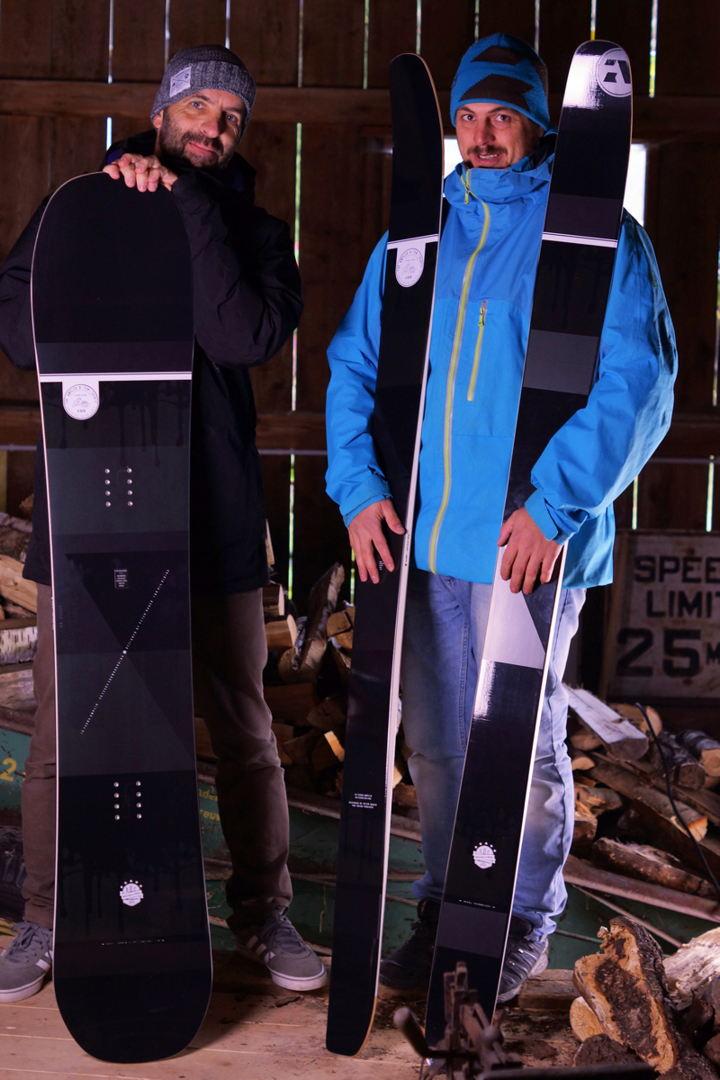This year Amplid and the company's owner, Peter Bauer, celebrate two big milestones. Amplid reaches the grand old age of TEN and Peter is still wondering how he's managed to make the business of skiing and snowboarding his job for the last THIRTY years. To mark the occassion Amplid is releasing a very limited edition ski and snowboard - the 10/30 Series. The ARC blog caught up with Peter to ask him some questions about the 10/30 series and about the past thirty years.
Most people struggle to be involved with, or have success within, the snowboard industry for 10 years but you’ve managed 30, how have you been able to stay focused and relevant for so long?
I feel the most important factor is my motivation for riding. I am still as keen as I was on day one to get a good day in. Obviously, you get a bit spoiled after all those years and places I got to ride when travelling the white planet, but still: Having a good morning with my friends, regardless whether it’s corduroy or bottomless powder, sharing riding moments is so awesome. Actually I take one thing back: bottomless pow is a lot better.
At the height of your career as a professional snowboarder you were winning World Cup events nearly every weekend and poaching first descents off the back of Mt Blanc in the week. Now that your riding is mostly resort based or skinning lines in your backyard do you still get the same enjoyment?
Back in the days, I digged getting paid to sit in a heli, spotting sketchy lines that the world would get to watch later on TV. Now I love it that there is no camera around and I can simply go where I want. There’s no waiting for the filmer’s “thumbs up” to drop in, no need to skip lines in the shade, no stupid drops necessary simply because the background is picturesque.
Perhaps the height of your fame was when you were the “P” in the PJ duo. Who were your closest riding buddies back then and what are they doing now?
I started riding back home with my buddies Tom and Markus. Markus, who had won the US open in Stratton in ’90, unfortunately died in a SUP accident 3 years ago. I’m still riding with Tom almost every weekend. He’s a faithful skinning companion with alpine experience I can trust. In the late 80s Josè Fernandes played an important role in my career: he taught me a lot about how to make money with snowboarding, how to get hooked-up with sponsors and work with media. In the early 90s, Jean Nerva crossed my path, actually every weekend in the finals! You might think that competitors you have to share the podium with get on your nerves after a while, but it was always fun fighting with Jean in the comps and going filming together. Jean always had a more holistic view on snowboarding, a very intellectual way of dealing with competing, working and traveling. He’s always been 10 years older than me, when you’re 20 you listen to what a 30 year old guy is telling you.
When people think of Peter Bauer, the man behind Amplid, they probably think about your 30 year history in Snowboarding. How long has skiing been a part of your life?
I only started snowboarding at the age of 19. Not because it didn’t attract me before, simply because it didn’t exist before. See, I am damn old! I‘ve skied all my life, until I started snowboarding every day in the winter months. I stopped skiing at 19 mainly because those narrow planks didn’t float in powder and the comp scene was all about wax Nazis and team suits. Snowboarding was new and fresh, and it worked in pow.
Anian used to be the ski design competence at Amplid, but you ski too right?
In the beginning we used to design Amplid’s skis together. I knew a lot about geometry; my experience at Burton gave me a killer instinct for flex and its correlation to the sidecut. A combination of Anian’s persuasion and my curiosity actually put me back on skis. I wanted to feel how design ideas work on the snow, not only what they look like in CAD. I’ve ridden so many boards in my life, as a snowboarder, designer and competitor, that I was actually really psyched getting back on skis again. It’s like biking: Once you’ve got it dialled, you never forget how it works.
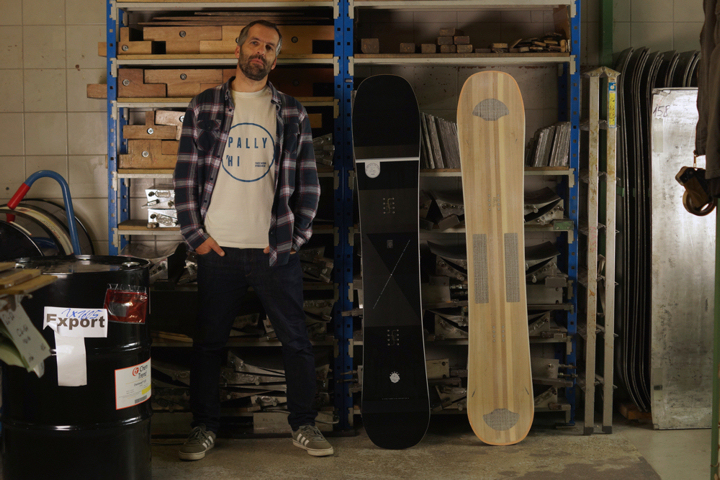
In your 30 years of R&D with skis and snowboards, have there been any concepts that were so far left field (commercially or practically) that the plug had to be pulled?
There have been many things which were kind of right at that time, and now looking back they are quite silly. Then again, I want to be careful with judging, because their time might come back again. Have a look at fins: In the beginning all boards had fins and they worked well in pow. After 1986 all fins were banned. The Burton Elite had side fins and a center fin. When you hit an icy patch, it almost pulled you out of your boots, because it slowed you down from 60 km/h to zero within one meter. Now Wolle Nyvelt is experimenting a lot with fins on his Äsmo Surfers. Step-in bindings were another subject where the industry dumped tons of money, and of course I spent lots of time developing and testing. I still think that not having to sit on your butt for buckling in is a benefit, but back then snowboarding was too vain to carry a board with strapless bindings. At Burton we were experimenting with something Jake named the “Bavaria Principle” after me – probably to give me shit. The sidecut radius curled into a really tight arc in the tail, after the effective edge had actually left the snow. The idea was to have a really cranky turn exit, while the tail would never wash away, even on blue ice. It actually worked, but it was so difficult to ride, and if you made a mistake, you really ate it. So yes, I admit that plug was best pulled.
Are the skills of designing snowboards transferable to ski design? Did it take you a long time to adapt your thinking and design instincts to skis?
Yes, big time. Construction first of all, meaning materials and working processes, is 99% the same. In the early days of snowboarding, snowboarders “stole” many things from skiing; edges, bases, glassfiber, etc. … all these things were on the shelf already. Starting in the mid 90ies, skiing began to take many design details from snowboarding: Have a look at “sidecut” as a geometry factor. While snowboarders carved clean arcs on the piste, skiers still smeared their turns. Or “width” – the most essential parameter for floatation in powder. Have you seen how wide skis are nowadays? So the same physical laws apply to both sports to a large extent. It didn’t take long to elevate my ski designing skills to where I was with snowboarding.
What have been your real highlights from the last 10 years of Amplid?
There are two: starting it was one and still being around is the other.
How has the Amplid brand changed in the last 10 years, if at all? And what does Amplid stand for today?
Amplid is a rider owned and rider driven company, with a heavy focus on technology. We’re always juggling the three paradoxical balls of weight, durability and longevity, simply to provide people with a better riding day on our boards. While most other brands invest more into team and marketing, we invest a lot into RnD, trying new materials, new geometries and new production methods – and this is still the maxime we are striving for today.
So what’s the 10/30 Series all about?
First of all, 10/30 stands for 10 years of Amplid, and 30 years of riding. With the 10/30 series we wanted to create a ski and a snowboard without taking into account market demand or economical practicalities, featuring shapes which are tailored to mine and Anian’s riding styles. I wanted to create a ski for Anian that he can spend the rest of his life on, just like the 10/30 snowboard that I designed for myself. These are shreds which suit our personal perception of riding. However, when our distributors and retailers got a glimpse of the first prototypes they all went crazy and pre-ordered.
What was your objective with the B10/30?
Really to combine elements of the UNW8 and Morning Glory, my two favourite boards. I tried to imagine what a board would have to look like if I needed to spend the rest of my life riding only that board. It should be a board which is stable at high speed on packed corduroy, with lots of edge grip and acceleration out of caves. On the other hand it should float in bottomless pow, with the nose always out. The board needs to be a certain length to have enough effective edge for control, but also not too long so that it still feels nimble.
I’ve been cooking using lots of our approved spices from the Amplid recipe book, but also some new ingredients. The overall construction is HEX02 – superlight honey comb made of recycled paper with a poppy HexMat prepreg weaving; it’s what we are using for the HiDef, UNW8 and Morning Glory. We also added new tubular carbon stringers in the nose and tail, to enhance torsional stiffness without making the board nervous. On the shape side we learned a lot from the Morning Glory’s ever-floating nose geometry, both outline and scoop radius. The S-rocker I took from the new Creamer, with a mellow camber under the back foot for additional control, but with a slight extension of the camber cavity in front of the front foot inserts. 163cm overall length is the optimum for my riding.
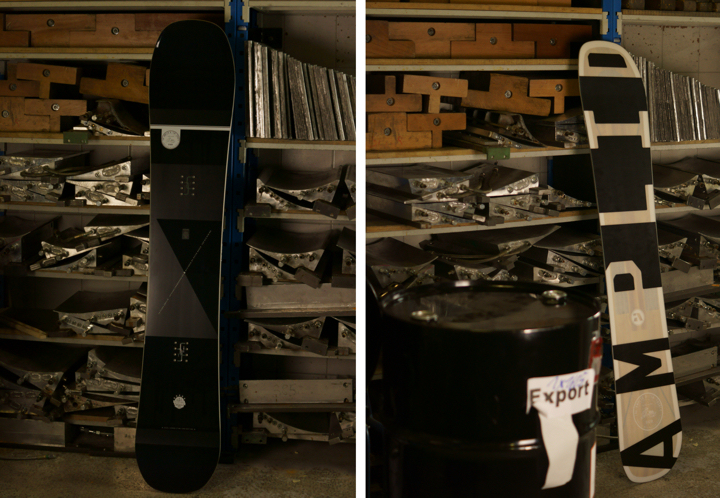
What were Anian’s requirements for the A10/30 and how did you translate those needs into the final design?
He loves big faces, pointing it at high speed, pulling big arcs into the snow, and solid tail hold. The result is a 191cm ski with a 126mm waist, a long smooth nose radius, underfoot camber, 5-DIM nose and tail geometry and a fairly flat tail kick. This ski is smooth and predictable!
191cm long and 126mm wide is a big ski! Won’t it be heavy and difficult to ski?
It is definitely a severe piece of hardware, but we integrated Amplid’s home-grown HEX02 honeycomb technology to remove some flab and make it as lightweight and nimble as possible. Anian is a big guy playing in big terrain; he’s not in need of mini-golf equipment!
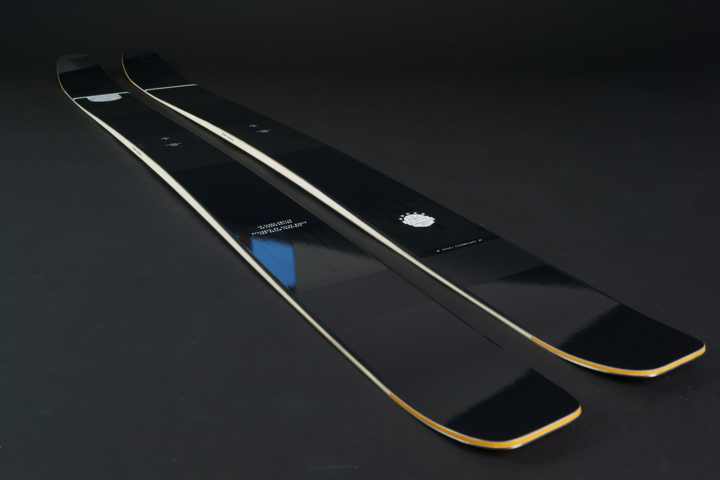
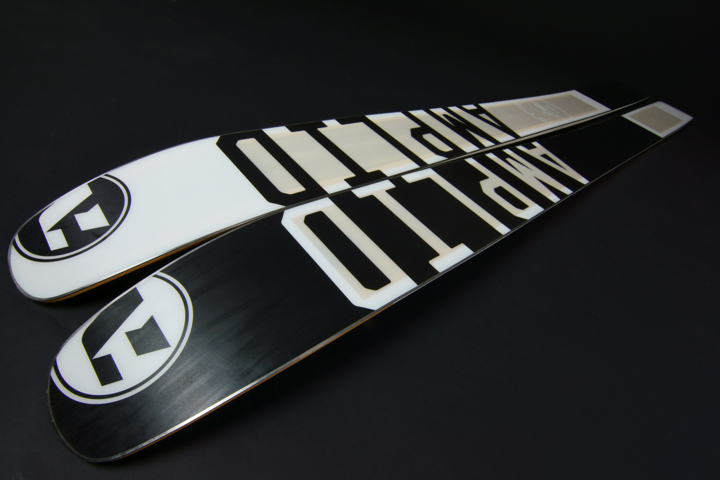
So instead of a ski and board packed-full of sudo, tech jargon, these products are rooted in your’s and Anian’s experiences and personal preferences?
Yes, it’s kind of a design ego trip. In RnD sometimes it’s nice to do something regardless of market demands, and very often those are the products which, in the end, have a surprisingly high demand.
We heard you’re only planning to press a very limited number of 10/30 shreds and that you will give away a number of them to the people who have been most influential to you over the years?
Yes, a pretty big proportion of the skis and boards will be given away to those people, with a laser engraved titanium plate bearing their name. Hopefully I won’t piss anybody off by either forgetting them or intentionally not shipping them one with the postman! It’s a very small group, kind of an “exclusive club”. I can’t really send more out they’re expensive boards to build and ship!
A very limited number of 10/30 boards and skis will be available to the public. Some of these will be in the hands of very special retailers and a few pairs will be available from Amplid online.
But what if these people are no longer riding?
Hey, we are not producing furniture or sculptures. Our shreds are built to be ridden. Obviously they are beautiful, and would look nice on the wall or on a coffee table, but a stallion wants to live in the wilderness. If you’re retired from riding, sorry but there’s no ski or board for you.
What can we expect from Amplid and Peter Bauer over the next 10 years?
In the future you can expect Amplid to release more boards and skis that we build to be the best at what they do… which is something we’ve been doing for the last 10 years. And for sure a 20/40 series in 2024, but I’m not sure which lengths yet.
